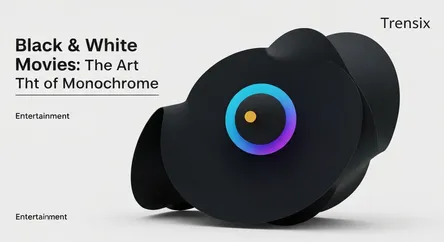Entertainment
Black & White Movies: The Art of Monochrome

Discover why black and white cinematography is making a comeback. Learn what it is, why directors choose it, and how it impacts the viewing experience.
What is it?
Black and white, or monochrome, cinematography is a filmmaking style that presents visuals in varying shades of black, gray, and white. Historically, it was the only option available until color film became widespread in the mid-20th century. Today, it's a deliberate artistic choice rather than a technical limitation. This style relies heavily on contrast, lighting, and shadow (a technique known as chiaroscuro) to create depth, mood, and texture. It forces filmmakers and audiences to focus on composition, form, and the core emotional elements of the story without the influence of a color palette.
Why is it trending?
Monochrome is experiencing a modern renaissance as directors use it to achieve specific aesthetic and narrative goals. Films like Roma, The Lighthouse, and Belfast have garnered critical acclaim, proving black and white is far from obsolete. Directors often choose this style to evoke a sense of timelessness or nostalgia. It can also create a stark, dramatic, or dreamlike atmosphere that enhances genres like noir or horror. By stripping away color, filmmakers can draw more attention to actors' performances, the script's nuances, and the fundamental visual storytelling.
How does it affect people?
The absence of color profoundly affects the audience's emotional response. For many, it lends a film a classic, sophisticated, or more serious feel. High contrast can heighten tension, making scenes more intense. It encourages viewers to engage their imagination differently, focusing on textures, shapes, and the play of light in a way that color can sometimes distract from. This focused viewing experience can lead to a deeper appreciation of the filmmaker's craft and a stronger connection to the characters' emotional journeys, creating a powerful and memorable impact.